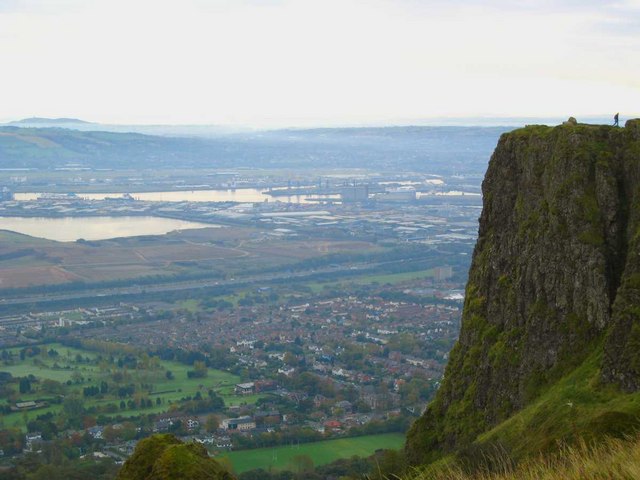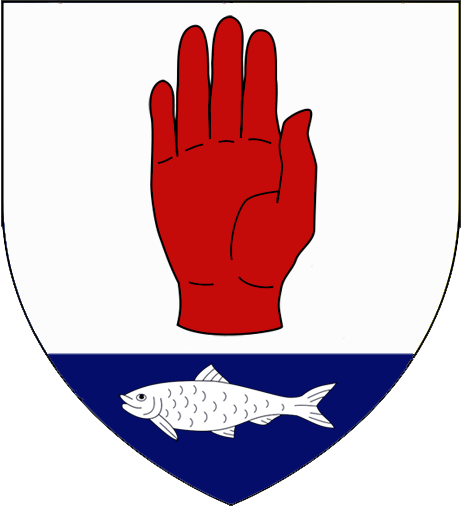|
Cavehill
Cave Hill or Cavehill is a rocky hill overlooking the city of Belfast, Northern Ireland, with a height of . It is marked by basalt cliffs and caves, and its distinguishing feature is 'Napoleon's Nose', a tall cliff which resembles the profile of the emperor Napoleon. On top of this are the remains of an ancient promontory fort called McArt's Fort. Cavehill was also historically called 'Ben Madigan' (from ga, Beann Mhadagáin, "Madagán’s peak"), after a king of Ulster called Madagán who died in 856AD. It forms part of the Belfast Hills and marks the southeastern edge of the Antrim Plateau. All of Belfast can be seen from its peak, as can the Isle of Man and Scotland on clear days. Like Arthur's Seat in Edinburgh, it lies just a few miles from the centre of a major city. Cave Hill is thought to be the inspiration for Jonathan Swift's ''Gulliver's Travels''. Swift imagined that Cave Hill resembled the shape of a sleeping giant safeguarding the city. Cavehill is als ... [...More Info...] [...Related Items...] OR: [Wikipedia] [Google] [Baidu] |
Belfast Castle
Belfast Castle ( Irish: ''Caisleán Bhéal Feirste''Ireland Highlights: Belfast Castle. https://www.irelandhighlights.com/info/belfast-castle/ ) is a mansion located in Cave Hill Country Park in Belfast, Northern Ireland, in a prominent position above sea level. Its location provides unobstructed views over the City of Belfast and Belfast Lough.Discover Northern Ireland: Belfast Castle Estate. https://discovernorthernireland.com/things-to-do/belfast-castle-estate-p676051 There have been several different structures called 'Belfast Castle' over the centuries, located on different sites. 'Belfast: The hidden castles under the city's shops' (BBC Northern Ireland, 28 August 2022). https://www.bbc.com/news/uk-northern-ireland-62167256 The current 'castle' is a Victorian structure, built between 1867 and 1870 on the slopes of Cave Hill, and is listed as being Grade B+. C.E.B. Brett, ''Buildings of Belfast, 1700-1914'', p. 46. Friar's Bush Press, Belfast, 1985 (paperback, revised edi ... [...More Info...] [...Related Items...] OR: [Wikipedia] [Google] [Baidu] |
Belfast
Belfast ( , ; from ga, Béal Feirste , meaning 'mouth of the sand-bank ford') is the capital and largest city of Northern Ireland, standing on the banks of the River Lagan on the east coast. It is the 12th-largest city in the United Kingdom and the second-largest in Ireland. It had a population of 345,418 . By the early 19th century, Belfast was a major port. It played an important role in the Industrial Revolution in Ireland, briefly becoming the biggest linen-producer in the world, earning it the nickname " Linenopolis". By the time it was granted city status in 1888, it was a major centre of Irish linen production, tobacco-processing and rope-making. Shipbuilding was also a key industry; the Harland and Wolff shipyard, which built the , was the world's largest shipyard. Industrialisation, and the resulting inward migration, made Belfast one of Ireland's biggest cities. Following the partition of Ireland in 1921, Belfast became the seat of government for Northern ... [...More Info...] [...Related Items...] OR: [Wikipedia] [Google] [Baidu] |
Northern Ireland
Northern Ireland ( ga, Tuaisceart Éireann ; sco, label=Ulster-Scots, Norlin Airlann) is a part of the United Kingdom, situated in the north-east of the island of Ireland, that is variously described as a country, province or region. Northern Ireland shares an open border to the south and west with the Republic of Ireland. In 2021, its population was 1,903,100, making up about 27% of Ireland's population and about 3% of the UK's population. The Northern Ireland Assembly (colloquially referred to as Stormont after its location), established by the Northern Ireland Act 1998, holds responsibility for a range of devolved policy matters, while other areas are reserved for the UK Government. Northern Ireland cooperates with the Republic of Ireland in several areas. Northern Ireland was created in May 1921, when Ireland was partitioned by the Government of Ireland Act 1920, creating a devolved government for the six northeastern counties. As was intended, Northern Irela ... [...More Info...] [...Related Items...] OR: [Wikipedia] [Google] [Baidu] |
Arthur's Seat
Arthur's Seat ( gd, Suidhe Artair, ) is an ancient volcano which is the main peak of the group of hills in Edinburgh, Scotland, which form most of Holyrood Park, described by Robert Louis Stevenson as "a hill for magnitude, a mountain in virtue of its bold design". It is situated just to the east of the city centre, about to the east of Edinburgh Castle. The hill rises above the city to a height of , provides excellent panoramic views of the city and beyond, is relatively easy to climb, and is popular for hillwalking. Though it can be climbed from almost any direction, the easiest and simplest ascent is from the east, where a grassy slope rises above Dunsapie Loch. At a spur of the hill, Salisbury Crags has historically been a rock climbing venue with routes of various degrees of difficulty. Until recently rock climbing was restricted to the South Quarry, but access is currently banned altogether by Historic Environment Scotland. Name It is sometimes said that its name ... [...More Info...] [...Related Items...] OR: [Wikipedia] [Google] [Baidu] |
Lanyon, Lynn And Lanyon
Lanyon, Lynn & Lanyon, Civil Engineers and Architects was a 19th-century firm working mainly in Dublin and Belfast, and the leading architectural firm in Belfast during the 1860s. Its partners were Charles Lanyon, William Henry Lynn, and Charles' son John Lanyon. Charles Lanyon was the head of the firm and its most famous architect. In 1854, he took Lynn, his former apprentice, into partnership. Their projects included the "Lombardic" Gothic-style Sinclair Seaman's Presbyterian Church in Belfast, and the Venetian Gothic banks at Newtownards, County Down, and Dungannon, County Tyrone County Tyrone (; ) is one of the six counties of Northern Ireland, one of the nine counties of Ulster and one of the thirty-two traditional counties of Ireland. It is no longer used as an administrative division for local government but retain .... Lanyon, Lynn & Lanyon was created when John Lanyon became junior partner in 1860. The partnership with Lynn was dissolved in 1872. Projects Des ... [...More Info...] [...Related Items...] OR: [Wikipedia] [Google] [Baidu] |


.png)

